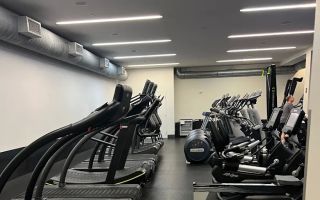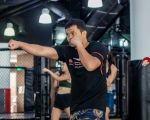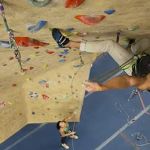Power Kicking Techniques in Muay Thai: Mastering Your Strikes
- Introduction
- Importance of Power Kicks
- Fundamentals of Power Kicking
- Types of Power Kicks in Muay Thai
- Training for Effective Power Kicks
- Real-Life Applications of Power Kicks
- Improving Kick Accuracy and Speed
- Conclusion
In the world of Muay Thai, power kicks are one of the most devastating tools a fighter can have. With a unique combination of technique, strength, and timing, Muay Thai power kicks can be used to disable opponents and score significant points in a match. Whether you’re a beginner or an advanced practitioner, learning how to properly execute power kicks is essential for effective Muay Thai fighting.
Power kicks can seem simple, but their success relies on more than just the force of the strike. Proper form, foot placement, and body mechanics all play a role in making your kicks powerful and effective. In this article, we’ll dive into the best power kicking techniques and how to apply them in both training and real-life situations.
Importance of Power Kicks in Muay Thai
Power kicks are fundamental to Muay Thai, often determining the outcome of a fight. In this martial art, fighters use their legs not only for striking but also for defense and movement. Power kicks, especially the roundhouse and teep, allow a fighter to dominate the opponent, create distance, and land blows that can cause real damage.
One of the biggest advantages of power kicks is their ability to attack an opponent from long range. Muay Thai fighters develop incredible strength in their legs, and when they unleash powerful kicks, it’s a combination of speed, balance, and explosive force that makes them so effective.
Fundamentals of Power Kicking
To master power kicks in Muay Thai, understanding the fundamental mechanics is crucial. The key elements of a powerful kick are body rotation, hip thrust, and proper foot placement. Each of these components contributes to generating maximum force and minimizing the risk of injury.
1. Body Rotation: Proper body rotation is essential to delivering a powerful kick. As you prepare to kick, rotate your torso to face the target, allowing your hips to follow through. The power for your kick will come from your core and hips, not just your leg.
2. Hip Thrust: A solid hip thrust adds extra force to your strike. As you extend your leg, make sure to push your hip forward while turning the foot. This thrust helps propel the kick into the target with more velocity and power.
3. Foot Placement: For a roundhouse kick, the foot should strike with the shin or the lower part of the leg. Aiming for the target with your shin ensures that you’re maximizing the surface area for contact, allowing the force to transfer smoothly into the opponent.
Types of Power Kicks in Muay Thai
There are several types of power kicks in Muay Thai, each suited for different situations. Let’s explore the most effective kicks and how they can be applied in combat:
- Roundhouse Kick (Teep): This is one of the most iconic power kicks in Muay Thai. Delivered from the side of the body, the roundhouse is designed to strike with the shin, typically targeting the opponent’s head, body, or legs. A well-executed roundhouse kick can break through the opponent's defenses and cause significant damage.
- Low Kick: Often targeting the opponent's legs, the low kick is aimed to disrupt their balance and wear them down over time. It’s an ideal technique for neutralizing an opponent’s mobility.
- Elbow Kick: A unique Muay Thai strike, the elbow kick combines the power of the knee with the precision of the elbow. It's particularly effective for close-range situations and can be used to target the head or body.
- Teep (Push Kick): Though not always a "power" kick in the traditional sense, the teep is a vital tool for controlling distance. When used effectively, it can push your opponent back, off-balance them, or create an opening for more powerful strikes.
Training for Effective Power Kicks
To truly master power kicking techniques, consistent training is key. Practicing with both shadowboxing and pad work allows you to build muscle memory and improve your kicking technique.
1. Shadowboxing: Use shadowboxing to work on your footwork, balance, and rhythm. Focus on delivering smooth, powerful kicks while visualizing an opponent in front of you.
2. Pad Work: Working with a training partner and using pads or focus mitts is one of the best ways to develop your power kicks. Aim to land your kicks with precision, and gradually increase the speed and power of your strikes over time.
3. Leg Conditioning: Power kicks require strong legs and hips. Incorporating leg exercises like squats, lunges, and plyometric drills will help increase your kicking strength and explosiveness.
Real-Life Applications of Power Kicks
In real-life combat situations, power kicks are incredibly versatile. A fighter can use them to close the distance or maintain control of the ring. Whether you're defending yourself or looking to incapacitate an opponent, knowing when and how to throw a power kick can be a game-changer.
One famous example is the knockout win by Saenchai, a Muay Thai legend, who utilized devastating roundhouse kicks to finish off his opponents in numerous high-level fights. His mastery of power kicks made him one of the most respected fighters in the world.
Improving Kick Accuracy and Speed
Along with power, accuracy and speed are essential to executing effective kicks in Muay Thai. To improve your accuracy, focus on hitting specific targets during training, such as the opponent’s head, ribs, or thighs. Use drills that force you to aim with precision, like targeting pads or using a focus mitt.
Speed is developed by repeating the kicking motions quickly, increasing explosiveness in the hips and legs. Plyometric exercises, such as jumping squats or explosive leg press exercises, can improve your ability to deliver fast, powerful kicks when it matters most.
Conclusion
Mastering power kicking techniques in Muay Thai is crucial for any fighter looking to elevate their game. By understanding the key mechanics of power kicks and incorporating sport-specific drills into your routine, you can improve your kicking strength, accuracy, and speed. Whether you’re training for competition or self-defense, power kicks will help you land decisive strikes that can make all the difference in a fight.
Looking to take your Muay Thai skills to the next level? Check out Humble Challenger for more resources and expert training advice. Start mastering your power kicks today!

































